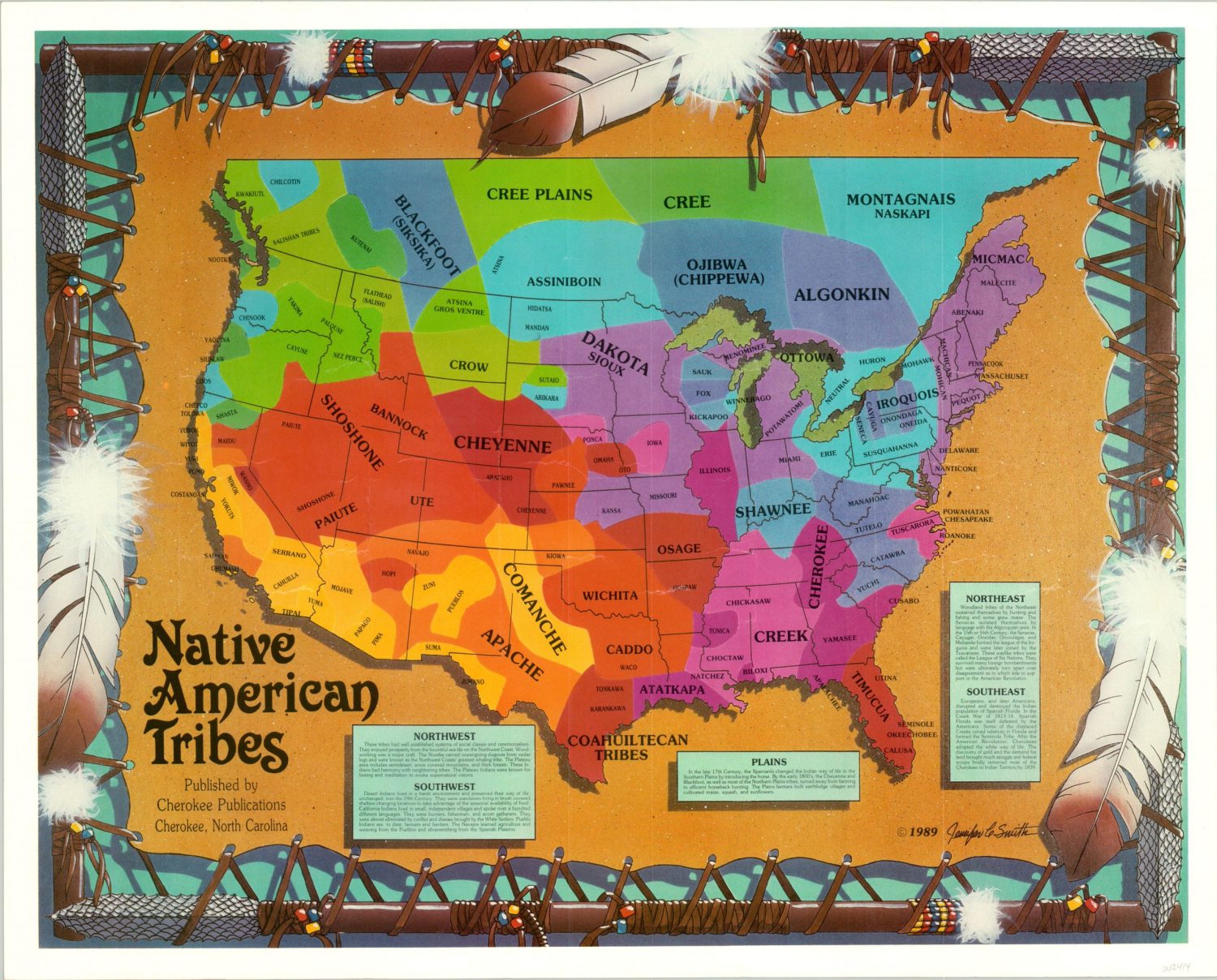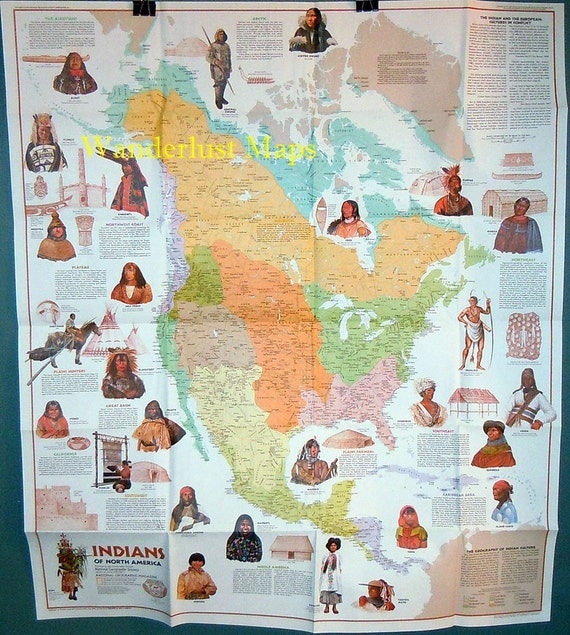A Tapestry of Cultures: Exploring the Diverse Landscape of Native American Tribes
A Tapestry of Cultures: Exploring the Diverse Landscape of Native American Tribes

The United States is often portrayed as a melting pot of cultures, a nation built on the foundation of immigrants from around the globe. However, before the arrival of European settlers, the land was already home to a rich tapestry of indigenous cultures, each with its own unique history, language, traditions, and way of life. These are the Native American tribes, a diverse group of people who have inhabited this continent for millennia, shaping the landscape and leaving an indelible mark on its history.
Estimating the exact number of distinct Native American tribes is a complex task. The US Bureau of Indian Affairs (BIA) currently recognizes 574 federally recognized tribes, while other sources suggest the total number of tribes could be significantly higher, with some estimates reaching over 1,000.
Related Articles: A Tapestry of Cultures: Exploring the Diverse Landscape of Native American Tribes
- Pueblo Tribe: Ancient Heritage Unveiled in Southwest
- Uncover the Spiritual Heart of the Cheyenne: Discover Their Sacred Ways
- Journey Through Time: Uncovering the Culinary Secrets of the Dakota Tribe
- Who Ruled the Wild Frontier: Unraveling the Most Feared Native American Tribe
- Unleash the Spirit of the Wild West: The Enchanting Melodies of Cheyenne’s Songs
This vast diversity stems from the fact that Native Americans have inhabited the continent for an incredibly long time, with archaeological evidence suggesting human presence dating back over 15,000 years. Over these millennia, various groups migrated, adapted to diverse environments, and developed distinct cultural practices, creating a mosaic of unique identities.
Understanding Tribal Diversity: A Glimpse into the Tapestry
To truly appreciate the diversity of Native American tribes, we must delve into some key aspects that contribute to their distinct identities:
1. Language: One of the most striking aspects of Native American diversity is the vast array of languages spoken across the continent. Linguists estimate that over 300 distinct Native American languages were spoken before European colonization. Sadly, many of these languages are now endangered or extinct due to forced assimilation policies and cultural suppression.
2. Geographic Location and Environment: Native American tribes have adapted to a wide range of environments, from the Arctic tundra to the tropical rainforests, the arid deserts to the lush forests. Their cultures reflect this adaptation, with distinct housing styles, subsistence strategies, and social structures shaped by the specific challenges and opportunities of their environment.
3. Cultural Practices and Beliefs: Native American tribes have rich and diverse cultural practices, encompassing everything from storytelling and music to art, dance, and spiritual beliefs. These practices are often rooted in deep connections to the natural world, honoring the land, animals, and spirits they believe inhabit it.
4. Governance and Social Structures: Native American tribes have varied systems of governance and social structures. Some tribes have matrilineal societies, where lineage and inheritance are traced through the mother’s line, while others are patrilineal. Some have complex chiefdoms with hierarchical structures, while others have more egalitarian forms of governance.
5. Historical Experiences and Resilience: Native American tribes have faced a tumultuous history, marked by colonization, displacement, and forced assimilation. However, despite these challenges, they have shown remarkable resilience, maintaining their cultural identities and fighting for their rights.

A Look at Some Notable Tribes:
To illustrate the diverse tapestry of Native American tribes, let’s explore a few examples:
-
The Navajo Nation: One of the largest Native American tribes in the United States, the Navajo people are known for their stunning silverwork, weaving, and storytelling traditions. They inhabit a vast territory spanning parts of Arizona, New Mexico, and Utah.

-
The Cherokee Nation: The Cherokee people are known for their rich cultural heritage, including their syllabary, a unique writing system developed by Sequoyah. They have a long and complex history, including the forced removal of their people during the Trail of Tears.

The Lakota Tribe: The Lakota people, also known as the Sioux, are renowned for their warrior culture and their resistance to European colonization. They have played a significant role in the history of the American West, particularly in the Black Hills region.
-
The Inuit People: The Inuit, who inhabit the Arctic regions of North America, are known for their resilience in a harsh environment. They have a unique culture that includes traditional hunting practices, intricate storytelling, and stunning ivory carvings.
-
The Hopi Tribe: The Hopi people, located in Arizona, are known for their rich agricultural traditions, their intricate kachina dolls, and their strong connection to the natural world. They have a unique social structure, with matrilineal descent and a strong emphasis on community.
The Importance of Recognizing and Respecting Tribal Diversity:
Understanding the diverse tapestry of Native American tribes is not just an academic exercise. It is crucial for fostering respect, understanding, and collaboration between indigenous communities and the broader society. Recognizing the unique histories, cultures, and perspectives of individual tribes is essential for ensuring their rights, promoting self-determination, and fostering a more just and equitable society.
Moving Forward: A Call for Recognition and Respect
In conclusion, the diversity of Native American tribes is a testament to the resilience, creativity, and adaptability of the human spirit. As we move forward, it is crucial to acknowledge the ongoing struggle for recognition, respect, and self-determination faced by indigenous communities.
By learning about the rich history and cultural practices of Native American tribes, we can foster a deeper understanding and appreciation for their contributions to the fabric of American society. Let us work together to create a future where Native American voices are heard, their rights are protected, and their cultures are celebrated.
FAQ: How Many Different Native American Tribes Are There?
Q: How many Native American tribes are there in the United States?
A: The US Bureau of Indian Affairs (BIA) currently recognizes 574 federally recognized tribes. However, other sources estimate the total number of tribes could be significantly higher, with some estimates reaching over 1,000.
Q: Why is it difficult to determine the exact number of Native American tribes?
A: The difficulty in determining an exact number stems from various factors:
- Historical factors: Colonization, forced assimilation, and cultural suppression have led to the loss of tribal identities and languages.
- Lack of consistent definition: The term "tribe" itself is not a universally accepted definition, with different groups using it in different ways.
- Ongoing tribal recognition: The BIA continues to recognize new tribes, making it difficult to establish a definitive number.
Q: What is the difference between a "tribe" and a "nation"?
A: The terms "tribe" and "nation" are often used interchangeably, but there are subtle distinctions:
- Tribe: Generally refers to a group of people with a shared culture, language, and territory.
- Nation: Often implies a more formal political entity with a greater degree of autonomy and self-governance.
Q: How can I learn more about specific Native American tribes?
A: There are many resources available to learn more about Native American tribes:
- Tribal websites: Many tribes have their own websites with information about their history, culture, and current activities.
- Museums and cultural centers: Museums and cultural centers dedicated to Native American history and culture offer valuable insights.
- Books and documentaries: There are numerous books and documentaries exploring the history and cultures of specific tribes.
- Tribal events and festivals: Attending tribal events and festivals provides a unique opportunity to experience their traditions firsthand.

Closure
Thus, we hope this article has provided valuable insights into A Tapestry of Cultures: Exploring the Diverse Landscape of Native American Tribes. We hope you find this article informative and beneficial. See you in our next article!


